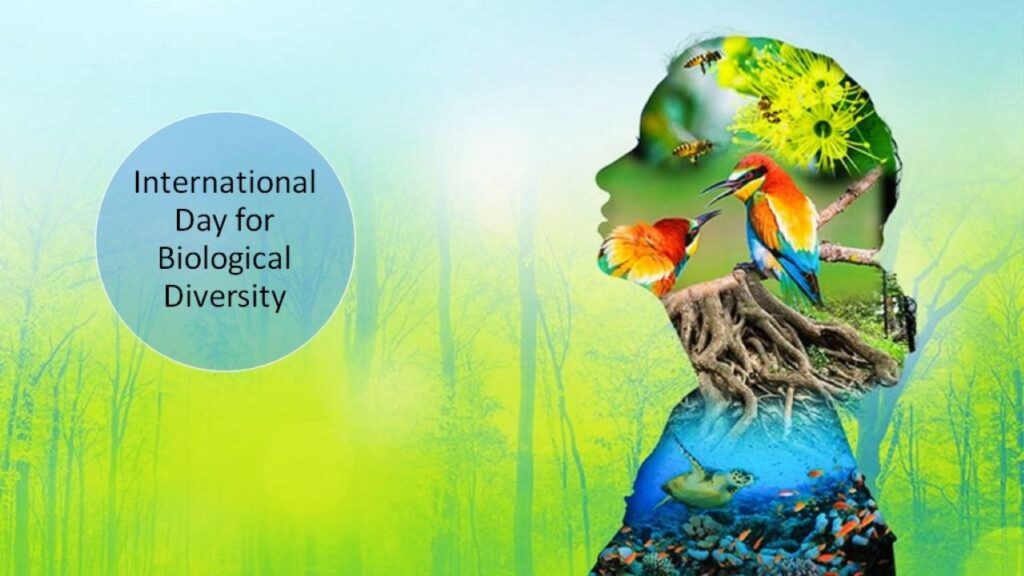The International Day for Biological Diversity, celebrated every year on May 22nd, holds a special significance this year as the world witnesses a ray of hope with the adoption of the Kunming-Montreal Global Biodiversity Framework at the 15th Conference of Parties to the UN Convention on Biological Diversity (COP 15).
This historic achievement calls for a swift transition from agreement to action in order to rebuild biodiversity. In this blog, we delve into the importance of biodiversity, the threats it faces, and the urgent need for immediate action to preserve & restore our planet’s natural assets.
Understanding the Significance of Biodiversity:
Biodiversity encompasses not only the vast variety of plants, animals, and microorganisms but also the genetic differences within species and the diverse ecosystems that facilitate interactions among varied organisms. It plays a crucial role in sustaining life on Earth, providing essential resources such as food, medicine, and ecosystem services.
For instance, fish contribute to animal protein for billions of people, and plants supply over 80% of the human diet. Moreover, biodiversity serves as a crucial defense against zoonotic diseases and pandemics like COVID-19.

The Crisis of Biodiversity Loss:
Despite the recognition of biodiversity as a global asset, human activities continue to significantly reduce the number of species. This loss poses a threat not only to the natural world but also to human health and well-being. Alarming statistics reveal that over one million species are at risk of extinction due to habitat degradation, pollution, and the climate crisis.
Land degradation, in particular, has a profound impact on biodiversity, with 85% of all species dependent on less than 30% of the Earth’s surface. This depletion of biodiversity exacerbates climate change and poses serious risks to ecosystems, societies, and economies.
The Kunming-Montreal Global Biodiversity Framework: A Turning Point
The adoption of the Kunming-Montreal Global Biodiversity Framework marks a pivotal moment in our collective efforts to safeguard biodiversity. The framework sets ambitious targets, including the conservation of at least 30% of terrestrial, inland water, and coastal and marine areas.
It recognizes the three levels of biodiversity (ecosystems, species, and genetic diversity) and emphasizes the importance of nature-based solutions. However, the framework’s success lies in its effective implementation and integration into national plans and policies.
Urgency for Action: Building Back Biodiversity
As we transition from agreement to action, it is imperative to redirect our focus towards concrete measures to rebuild biodiversity. This year’s International Day for Biological Diversity theme, “From Agreement to Action: Build Back Biodiversity,” calls for immediate and coordinated efforts. Governments, stakeholders, and communities are urged to launch and publicize actions aligned with the Global Biodiversity Framework.
It is crucial to integrate biodiversity conservation into sustainable production and consumption patterns, prioritize nature-based solutions, support indigenous peoples and local communities, and demand stronger action against biodiversity loss and climate change.

Collaborative Synergy for a Sustainable Future:
Reversing the current trajectory of biodiversity loss requires collaborative efforts across governments, civil society, and the private sector. By aligning with the Sustainable Development Goals and other multilateral agreements, we can harness synergies and create a harmonious future for our planet.
Conservation, management, and restoration of ecosystems and land resources are key to striking the right balance and achieving a healthier planet. It is essential to track progress, increase awareness, improve biodiversity data and tools, and ensure coherence in global policy agendas.
Conclusion:
On this International Day for Biological Diversity, let us reflect on the critical role biodiversity plays in sustaining life on Earth. With the adoption of the Kunming-Montreal Global Biodiversity Framework, we have an opportunity to make a positive impact and build back biodiversity.
The time for action is now. By embracing sustainable practices, integrating nature-based solutions, and fostering collaboration, we can create a symphony of life that resonates through generations to come. Together, we can secure a sustainable future for all, where nature thrives and humanity flourishes.
References:
